As Trump vs. Powell drama heats up, the Fed may be starting to debate when to cut interest rates
Published in Business News
The Federal Reserve is preparing to go another month without cutting interest rates, fully knowing that one person in particular won’t be very happy about it: President Donald Trump.
In the run-up to the Fed’s July meeting, the White House has unleashed its fiercest pressure campaign yet on the central bank and Chair Jerome Powell. Trump says Powell is “too late” and “playing politics” — accusing him of cutting rates to help the economy during election season last fall but keeping them steady now that he’s president. The Trump administration has recently seized on the ballooning $2.5 billion renovation of the Fed’s headquarters as possible evidence of mismanagement.
Trump in mid-July even discussed with congressional Republicans the concept of firing Powell, and according to reports from CBS News, he showed them a letter that he had already drafted. The president denied that report, and his allies have since softened that rhetoric, with Treasury Secretary Scott Bessent saying he sees no reason for Powell to step down. Still, tensions are high, and one of the nation’s top economists shocked Wall Street when he said Powell should resign to protect the Fed’s independence.
The Federal Open Market Committee (FOMC) must ignore those attacks to prove that it isn’t political as it discusses what to do with its key benchmark interest rate, according to experts interviewed by Bankrate. Powell, meanwhile, will likely only wade into the political talk at the Fed’s post-meeting press conference to reiterate his plans to stay on the job.
“You have to try to just ignore it and not talk about it,” said Bill English, a professor at the Yale School of Management who attended FOMC meetings throughout his more than two-decade stint at the Fed’s board of governors. “He’ll just say, ‘We’re thinking about our mandate and trying to get policy right.’ That’s a hard enough job.”
Trump’s battle with Powell may steal the spotlight from interest rates this week, but Fed officials could begin laying the groundwork for their next rate cut. Several policymakers have indicated they still recommend cutting interest rates later this year, and the Fed is still penciling in a median of two cuts.
Here’s what to expect from the Fed’s July meeting — and what you should do with your money amid the volatility.
1. Inflation uncertainty from tariffs is still keeping the Fed on hold
The latest inflation data vindicated the Fed officials who had been warning that Trump’s massive tariffs could push up inflation. Prices last month jumped the most since February, with the overall inflation rate rising to 2.7%, according to consumer price index (CPI) data from the Bureau of Labor Statistics for June.
Tariffs left an obvious mark. Annual inflation rates on many of the items that are typically imported — appliances, toys, household furnishings and furniture — hit the highest in more than two years. Goods inflation was responsible for more than a third (38%) of overall inflation last month.
More price hikes could be coming. For example, vehicles that dealers ordered after tariffs took effect began hitting lots in late June, according to Diane Swonk, chief economist at KPMG.
“We may be in an inflection point,” said Raphael Bostic, president of the Atlanta Fed, in public remarks shortly after the CPI report’s release. “Over the last several months, the inflation data has come in really in a very nice way, very close to target. But this most recent CPI print really is sending a different message.”
Fed officials are likely to cite the latest inflation data as reasoning for keeping rates steady in July. They want to be sure they don’t repeat past mistakes from the pandemic, when they kept rates too low for too long under an assumption that inflation was only temporary.
Other data suggests to the Fed that the U.S. economy doesn’t currently need rescuing. Consumer spending at restaurants and retailers was stronger than expected last month, and weekly claims for unemployment insurance (UI) have bounced lower for six straight weeks.
“There’s really no rush to ease policy further,” said Sal Guatieri, senior economist and director of economics at BMO, who formerly worked at the Bank of Canada. “The Fed does have the luxury of time to get more data, to get more clarity on future trade policies, before making a decision.”
It’s more than just Powell who thinks that the Fed should keep interest rates steady. All Fed officials have been in agreement that the FOMC should keep interest rates alone this year — at least so far.
“It’s going to take time for the tariffs to settle,” said St. Louis Fed President Alberto Musalem, during a July 10 public appearance. Musalem also has a vote on policy this year. “As we progress through the year, I’m going to get more comfortable understanding what the total impact of tariffs may be.”
2. Two top Fed officials are preparing to dissent against Powell
But divisions could soon be coming.
Fed Governor Christopher Waller has left no room for ambiguity: He’s going to vote for an interest rate cut in July, and if the rest of the committee isn’t persuaded, he’ll dissent against its choice to leave borrowing costs alone.
He isn’t alone. Minutes from the Fed’s June meeting indicated that a “couple” of participants would be open to considering a rate cut in July. If Fed officials’ recent public remarks are any guide, that second Fed official is likely Governor Michelle Bowman.
“Should inflation pressures remain contained, I would support lowering the policy rate as soon as our next meeting in order to bring it closer to its neutral setting and to sustain a healthy labor market,” she said back in late June.
Dissents from Waller and Bowman, both Trump appointees, would mark rare monetary policy division. Regional reserve bank presidents are far more likely to dissent against the chair than Fed governors, historical data from the St. Louis Fed shows. Since 2000, Fed governors have dissented just four times — compared to 89 times for presidents. The last time two Fed governors dissented against the chair, meanwhile, was December 1993.
The most recent governor to dissent against the chair was Bowman herself. Back in September, she preferred to cut interest rates by just a quarter of a percentage point, not the half point that her colleagues on the committee approved.
How much trouble that could prove to be for Powell, though, remains to be seen. When asked about dissents, Powell usually reiterates that he welcomes differing opinions and sees debates as a way to avoid groupthink.
“It’s not that surprising that they’re getting to a place where there is disagreement,” English said. “They think they’re on a trajectory to cutting rates, but when is the right moment to do that? That’s always going to be a hard decision.”
3. The Fed may still lay the groundwork for a rate cut this fall
Even though they’re not being as aggressive as Trump wants, Fed officials have said for months now that they expect to cut interest rates this year. Many investors are starting to think that the next rate cut may happen in September, according to CME Group’s FedWatch tool.
“One of the ways you can make a policy mistake is to wait for something to materialize that doesn’t,” said San Francisco Fed President Mary Daly on July 10. “It’s useful now to sort of recognize that waiting for inflation to rise or become persistent could leave us behind in terms of adjusting the policy rate, and I don’t want to be doing that.”
That timing would line up with the data Fed officials say they still need. By their September gathering, officials will be able to see two more inflation reports and two more snapshots on the U.S. labor market.
“If they don’t move at this meeting, they could hint pretty broadly that, if the data are good, they’ll be cutting at the next meeting,” English said.
With uncertainty still clouding the U.S. economy, the FOMC may also not be ready to send a strong signal.
“It wouldn’t surprise me at all if someone came to us from the future and said, ‘the economy is doing just fine. The Fed is not cutting interest rates in September,’” McBride said.
It’s an uncertain moment for the Fed — and consumers. Here are the 3 best steps to take
How soon the Fed cuts interest rates has big implications for your pocketbook. In one way or another, all borrowing costs in the U.S. economy are influenced by the Fed’s key interest rate, such as the price you pay to finance a car or a home renovation as well as purchases on a credit card.
The reason for those rate cuts, though, matters for your money, too. Lenders tend to pull back in times of economic uncertainty, and lower rates might not sway borrowers to make a big-ticket purchase if they’re simultaneously worried about losing a job.
The window for the Fed’s “good news” cuts — that is, cuts because inflation is slowing and not because the U.S. economy is turning a corner — may be starting to close, according to McBride.
“I doubt you’ll see material and sustainable improvement in inflation between now and the September Fed meeting,” he said. “But the labor market situation could be perceived much differently on the other side of the next two employment reports than it is right now.”
If you’re hoping to finance a big-ticket purchase this year or are worried about the state of the economy, McBride recommends focusing on what you can control.
—Build up your emergency fund It’s already harder to find a new job than it was three years ago, and weaker labor markets typically increase the risk of job loss. That’s why financial planners recommend establishing an emergency fund, ideally covering six months of expenses.After years of elevated inflation, though, your budget may feel pinched. A review of your monthly spending may be an easy place to start. Eliminate any items (like subscriptions, services or other discretionary items) that you don’t need right now, and redirect those savings toward your emergency fund.
—Keep your cash in a liquid — and competitive — account Yields on certificates of deposit (CDs) are still among the most competitive in years — but locking up funds you might need for an unexpected expense won’t help. At the same time, your savings will barely grow in a brick-and-mortar bank paying next to nothing.A better home for your emergency fund could be a high-yield savings account. Bankrate’s top picks for July are still offering 4% APY or more, translating to bigger earnings and a faster path to that ideal six-month cushion.
—Eliminate your exposure to high interest rates Americans with high-interest credit card debt have been paying the biggest price in today’s high-rate era — literally. Credit card rates hit record highs after the Fed hiked rates to the highest level in more than two decades to quell post-pandemic inflation. And even after the Fed’s full percentage point worth of cuts last year, they’re still hovering above 20%.Balance-transfer cards or nonprofit credit counseling services can help you speed up your repayment. Those services will pay off your credit card, for a fee, and then offer you a window of time to pay down your balances with little-to-no interest.
©2025 Bankrate online. Visit Bankrate online at bankrate.com. Distributed by Tribune Content Agency, LLC.
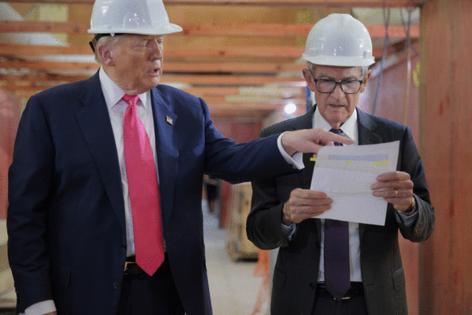
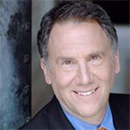
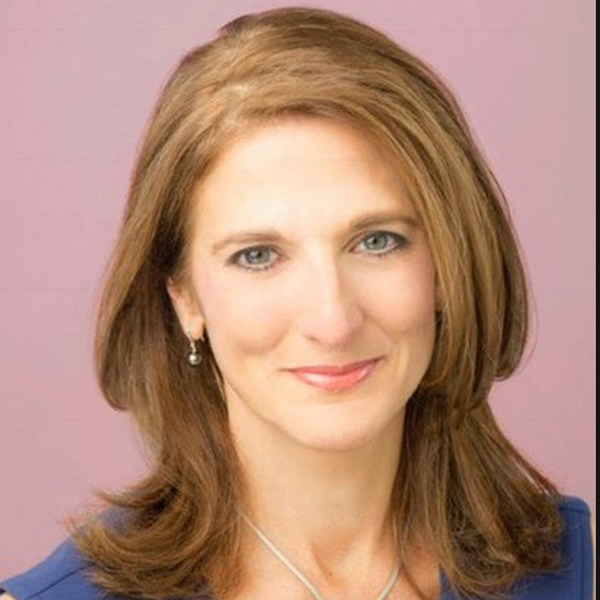
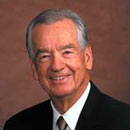
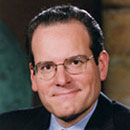
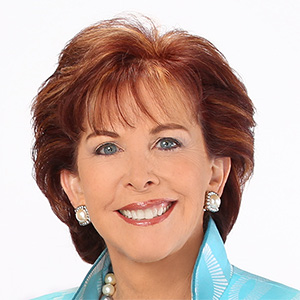



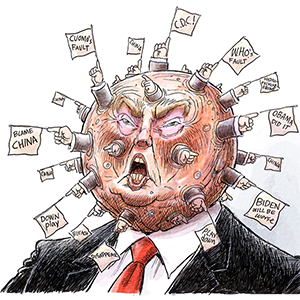


Comments